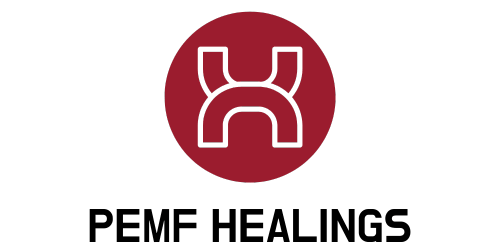If you’ve been considering trying PEMF therapy for its numerous benefits, you might be wondering how often you should use it to achieve optimal results. Well, the answer is not a one-size-fits-all, as it depends on various factors such as your specific condition and overall health. In this article, we will explore the recommended frequency of PEMF therapy sessions and provide you with valuable insights on how to make the most out of this revolutionary treatment. So, let’s get started and find out the ideal frequency to harness the full potential of PEMF therapy.
What is PEMF Therapy?
Definition of PEMF Therapy
PEMF (Pulsed Electromagnetic Field) therapy is a non-invasive treatment method that involves the use of electromagnetic fields to stimulate and promote the body’s natural healing abilities. It works by delivering low-frequency electromagnetic waves to the body, which can help to restore balance and enhance cellular function.
History of PEMF Therapy
The use of electromagnetic fields for therapeutic purposes can be traced back to ancient times. Ancient civilizations, such as the Egyptians, Greeks, and Romans, utilized magnetic stones and natural magnets to promote healing. In modern times, PEMF therapy was developed based on the research of notable scientists like Nikola Tesla and Georges Lakhovsky. Today, PEMF therapy is widely used across the globe for various health conditions.
Benefits of PEMF Therapy
PEMF therapy offers numerous benefits for overall health and well-being. Some of the key benefits include:
-
Pain Relief: PEMF therapy has been shown to effectively alleviate pain by reducing inflammation, improving blood circulation, and promoting tissue regeneration. It is commonly used to manage chronic pain conditions like arthritis, fibromyalgia, and back pain.
-
Enhanced Recovery: PEMF therapy supports the body’s natural healing process and can accelerate recovery from injuries and surgeries. It helps to reduce recovery time, minimize scar tissue formation, and promote faster tissue regeneration.
-
Improved Sleep and Relaxation: Many individuals experience better quality sleep and relaxation after undergoing PEMF therapy. The therapy helps to promote deep relaxation and reduce stress, allowing for a more restorative sleep cycle.
-
Increased Energy and Vitality: PEMF therapy has been reported to increase energy levels and improve overall vitality. It aids in optimizing cellular function, boosting energy production, and enhancing the body’s natural detoxification processes.
-
Mental Clarity and Focus: By improving blood flow and oxygenation to the brain, PEMF therapy can help enhance mental clarity, focus, and cognitive performance. It is often used as an adjunct therapy for conditions like ADHD, depression, and anxiety.
-
Immune System Support: PEMF therapy stimulates the immune system, helping to strengthen its response against pathogens and foreign invaders. It can help to improve overall immune function and enhance the body’s ability to fight off infections.
Understanding Optimal Results
Defining Optimal Results
When it comes to PEMF therapy, optimal results refer to achieving the desired health benefits and improvements in the most effective and efficient manner. The goal is to use the therapy in a way that maximizes its potential benefits for the individual’s specific condition or health goal.
Factors Affecting Optimal Results
Several factors can influence the attainment of optimal results with PEMF therapy. These include:
-
Condition Severity: The severity of the condition being treated plays a role in determining the frequency, duration, and timing of PEMF therapy sessions. More severe conditions often require more intensive and frequent treatment.
-
Individual Sensitivity: Each person responds differently to PEMF therapy. Some individuals may require lower frequencies and shorter durations, while others may benefit from higher frequencies and longer sessions. It is important to gauge individual sensitivity and adjust accordingly.
-
Overall Health Status: The individual’s overall health and wellness also impact optimal results. Factors such as underlying health conditions, medications, and lifestyle choices can influence the body’s response to PEMF therapy.
-
Compliance and Consistency: Consistently adhering to the recommended frequency, duration, and timing guidelines is crucial for achieving optimal results. Regular and consistent use of PEMF therapy ensures that the body receives the necessary stimulation and allows for potential healing to occur.
Frequency Guidelines
Manufacturer Recommendations
Different PEMF therapy systems and devices may come with specific frequency recommendations from the manufacturer. It is important to carefully read and follow these guidelines to ensure safe and effective use of the therapy.
Typical Frequency Ranges
In the absence of manufacturer recommendations, there are typical frequency ranges that can be considered for PEMF therapy sessions. These ranges vary depending on the desired outcome and the condition being treated. Lower frequencies (1-10 Hz) are often used for relaxation and general well-being, while higher frequencies (10-100 Hz) may be employed to stimulate tissue repair and pain relief.
Adjusting Frequency Based on Condition
The frequency used in PEMF therapy can be adjusted based on the specific condition being targeted. For example, higher frequencies may be more beneficial for acute injuries or pain relief, while lower frequencies may be suitable for chronic conditions or relaxation purposes. Experimentation and observation can help determine the most effective frequency for individual needs.
Trial and Observation
Finding the optimal frequency for PEMF therapy may require some trial and observation. It is important to start with the recommended frequencies and then gradually adjust based on personal experience. Paying attention to the body’s response and any changes in symptoms can help in refining the frequency for optimal results.
Duration Guidelines
Manufacturer Recommendations
Similar to frequency, manufacturer recommendations for duration should be followed to ensure safe and effective use of PEMF therapy devices. These recommendations may vary depending on the specific device and intended use.
Typical Duration Ranges
In the absence of manufacturer guidelines, typical duration ranges can be considered as a starting point. PEMF therapy sessions usually last between 20 minutes to an hour. However, for more targeted and intensive treatments, longer sessions may be recommended.
Adjusting Duration Based on Condition
The duration of PEMF therapy sessions can be adjusted based on the condition being addressed. For acute injuries or pain relief, shorter sessions may be sufficient. In contrast, chronic conditions or more extensive injuries may require longer sessions. Gradual adjustments can be made based on individual needs and response.
Trial and Observation
It is important to observe how the body responds to the duration of PEMF therapy sessions. Starting with shorter durations and gradually increasing can help determine the optimal duration for desired outcomes. Monitoring any changes in symptoms and overall well-being can guide adjustments for optimal results.
Timing Considerations
Frequency Within a Day
When using PEMF therapy, it is important to determine the frequency and intervals between sessions throughout the day. This can be influenced by factors such as the severity of the condition, the individual’s response, and the specific device being used. In general, daily sessions or sessions every other day may be beneficial for most individuals.
Timing in Relation to Meals
To optimize the effectiveness of PEMF therapy, it is recommended to wait at least 1-2 hours after a meal before initiating a session. This allows for better absorption and utilization of the therapeutic effects of the therapy.
Timing in Relation to Medication
Certain medications may interact with PEMF therapy, so it is essential to consult with a healthcare professional regarding their timing and potential interactions. Some medications may require adjustments in timing or dosage to ensure maximum safety and efficacy.
Timing in Relation to Other Therapies
If using other therapies or treatments in conjunction with PEMF therapy, timing considerations should be taken into account. Consulting with healthcare professionals or therapists can help establish an optimal schedule that maximizes the benefits of each therapy without interference or contraindication.
Individual Variations
Personal Factors
Each person has individual factors that may influence the optimal use of PEMF therapy. These factors include age, overall health, lifestyle habits, and personal goals. Considering these factors can help tailor the therapy to meet individual needs and achieve optimal results.
Condition-specific Factors
Specific health conditions can also impact the use of PEMF therapy. Factors such as the nature of the condition, severity, duration, and underlying causes all play a role in determining the frequency, duration, and timing of therapy sessions. Consulting with healthcare professionals or therapists who specialize in the specific condition can provide valuable guidance.
Consulting with a Healthcare Professional
To ensure the safe and effective use of PEMF therapy, it is highly recommended to consult with a healthcare professional. They can assess individual needs, provide personalized recommendations, and monitor progress over time. Healthcare professionals can also help address any concerns or questions that may arise during the course of therapy.
Weekly Frequency Recommendations
General Guidelines
In general, using PEMF therapy 2-3 times per week can be a good starting point for most individuals. This frequency allows for adequate stimulation and optimization of the body’s natural healing processes. However, individual needs and conditions may require more or less frequent sessions.
Specific Conditions and Intensity
For specific conditions or more intensive therapeutic goals, more frequent sessions may be necessary. Chronic pain, injuries, and certain health conditions may benefit from daily or more frequent PEMF therapy sessions. These recommendations should be discussed with healthcare professionals or therapists who specialize in the particular condition.
Maintenance and Preventive Care
After achieving optimal results or when using PEMF therapy for maintenance and preventive care, sessions can be tailored to individual preferences. Some individuals may choose to continue with regular weekly sessions, while others may opt for less frequent sessions as part of their ongoing wellness routine.
Long-term Use Considerations
Managing Tolerance and Adaptation
Over time, the body may adapt to PEMF therapy, leading to decreased sensitivity or effectiveness. To manage tolerance and adaptation, it may be necessary to periodically adjust the frequency, duration, or intensity of the therapy. This can help maintain optimal results and prevent diminishing returns.
Periodic Breaks and Rest
Giving the body periodic breaks and rest from PEMF therapy can be beneficial. Taking short breaks or alternating between phases of intensive therapy and rest can help prevent overstimulation and allow the body to integrate the healing effects of the therapy.
Monitoring Progress and Adjusting
Regular monitoring of progress and overall well-being is crucial when using PEMF therapy in the long term. If any changes in symptoms, response, or overall health occur, adjustments to the frequency, duration, or timing of sessions may be necessary to ensure continued optimal results.
Consulting with a Healthcare Professional
As with any long-term therapy or treatment, it is important to have ongoing communication with a healthcare professional. Regular check-ins, assessments, and consultations can help ensure that the therapy remains aligned with individual health goals and needs.
PEMF Therapy Combination Approaches
Combining Different PEMF Systems
Combining different PEMF systems or devices can offer additional benefits and synergistic effects. Some individuals may choose to use multiple devices that target different areas or conditions simultaneously. However, it is important to consult with a healthcare professional to ensure the safe and appropriate use of multiple devices.
Combining PEMF with Other Therapies
PEMF therapy can be combined with other complementary therapies to enhance overall results. Modalities such as physical therapy, acupuncture, chiropractic care, and massage therapy can work synergistically with PEMF therapy to optimize healing, pain relief, and overall well-being.
Maximizing Synergistic Effects
To maximize the synergistic effects of combining different therapies, it is important to coordinate schedules and sessions. Consulting with healthcare professionals or therapists experienced in integrative approaches can help design a comprehensive treatment plan that maximizes the benefits of each therapy in a complementary and harmonious manner.
Conclusion
PEMF therapy is a powerful non-invasive treatment modality with a wide range of benefits for overall health and well-being. Understanding optimal results and tailoring the therapy to individual needs is essential to achieving maximum efficacy. By following frequency, duration, and timing guidelines, consulting with healthcare professionals, and monitoring progress, individuals can harness the full potential of PEMF therapy for their specific conditions or goals. With regular use and proper management, PEMF therapy can be a valuable addition to a comprehensive wellness routine for long-term optimal health outcomes.


